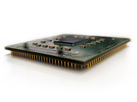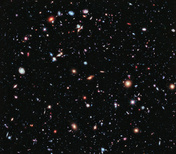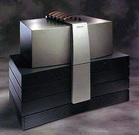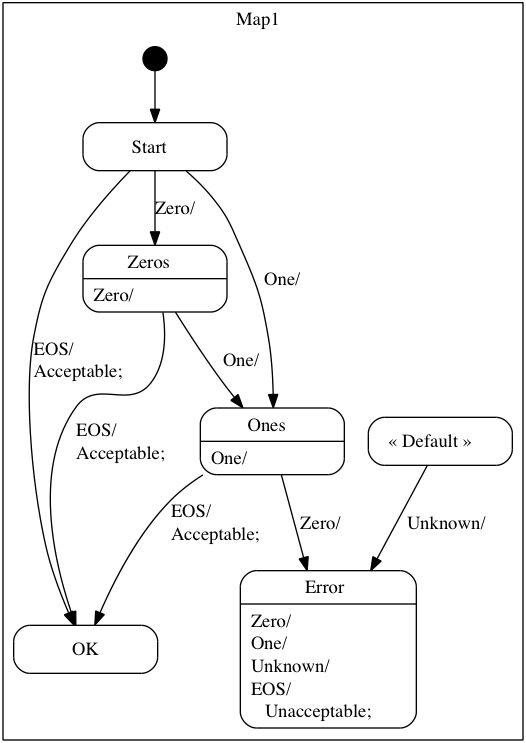|
Alas, when one is deeply and endlessly involved in the daily responsibilities of work and in life, it can be a challenge to find time to keep even a small, personal website up to date...
 This is a nice article regarding weakly-ordered CPUs. The author has covered a number of other subjects relating to lock-free programming on his site - definitely worth checking out! How to write an efficient spelling corrector in less than one page of code. (Links to implementations across a variety of languages are included at the end of the article.)
 Have you ever wanted to travel back to the beginning of time to see what some galaxies in our universe looked like? Well, now you can! (Well, almost...!) Astronomers have recently released a new and updated version of our deepest view into the universe - the Hubble eXtreme Deep Field (XDF). The XDF follows about eight years after the previous Hubble Ultra Deep Field (HUDF) image, which was released in 2004. The XDF image was created by the assembly of almost 10 years of Hubble telescope photographs, focused on just a portion from the center location of the original UDF image. Even though the XDF was created from a tiny portion of our sky, it contains images approximately 5,500 galaxies - some of which are estimated to date back to 13.2 billion years in time, when they were relatively young and still growing (!). You can learn more at the HubbleSite: Hubble Goes to the eXtreme to Assemble Farthest Ever View of the Universe, and you can find the XDF and related images and illustrations on their Release Images page. It is fascinating to download the high resolution version, then zoom in and pan around, and see the seemingly endless number of massive galaxies...! Peter Kankowski has put together a very interesting comparison of hash functions. His main question, tests of the various types of hash function algorithms (e.g., multiplicative and complex), and his conclusion are useful and worth reviewing, if you're looking for an appropriate hash function for your application. As is frequently the case in many areas in design and computing, there are trade-offs (!).
This is really fun! (Vi Hart has a number of other great videos on her YouTube page - highly recommended!)
You can learn more about Flexagons (and Hexaflexagons and all sorts of other variants) and how to make them from the Wikipedia Flexagon page.  It looks like we have a winner :-) Kindle Paperwhite Review: Forget Everything Else, This Is the E-Reader You Want (Gizmodo) Kindle Paperwhite is a big step forward for e-ink readers (gigaom) Amazon Kindle Paperwhite Review (SlashGear) A Clean, Well-Lighted Face (Wired) Kindle Paperwhite leaves a glowing impression (USA Today) Amazon Kindle Paperwhite Review (Engadget) Amazon's Kindle Paperwhite is the new king of e-readers (NBCNews.com) Kindle Paperwhite review (The Verge) Amazon Kindle Paperwhite is the Best E-Ink Screen You Can Buy (Mashable Tech) Kindle Paperwhite shines (CNET) Review: Amazon Kindle Paperwhite really shines (TechHive) The Kindle Paperwhite Is Evidently Amazing (The Atlantic Wire) Amazon's New Kindle Is The Best E-Reader You Can Buy (BusinessInsider) The Paperwhite is indeed a fantastic device. (Now, to go catch up on some reading ;-))
 There's a Cray T94 supercomputer currently up for sale on e-bay. These machines were pretty amazing - e.g., from the picture of the power requirements plate it looks like this particular T94 requires almost 70kW of power to operate - no wonder Cray offered a liquid-cooled model...! Comparing the relative compute and power capabilities of the T94 with some state-of-the art technology today, it's interesting to see how far things have advanced. According to the Cray T90 series announcement document from 1995, the T94 appears to have been one of their "entry-level" offerings at the time (a budget supercomputer!):
If you take a dual-CPU T94 configuration in mid-1995 (for example), that probably would have set you back almost $5M, and you would have ended up with a whopping 3.6 GFLOPS of computing capability, while using a massive amount of electricity in the process (e.g., about 70kW).
Now compare this to an NVIDIA GTX680 graphic card that you can buy today - for around $500, you can get a card that provides you with over 3000 GFLOPS of computing capability, while drawing just 195W of current. That's quite a contrast! There are some other interesting tidbits - from the T94 flyer, it did support an optional SSD (1-4GB), and memory bus-bandwidth-wise, the T94's bandwidth was 100GB/s, whereas today the GTX680's is just shy of 200GB/s. So the question now is - what will this area look like 20 years hence...? |
AuthorArchives
June 2013
Categories
All
|


 RSS Feed
RSS Feed